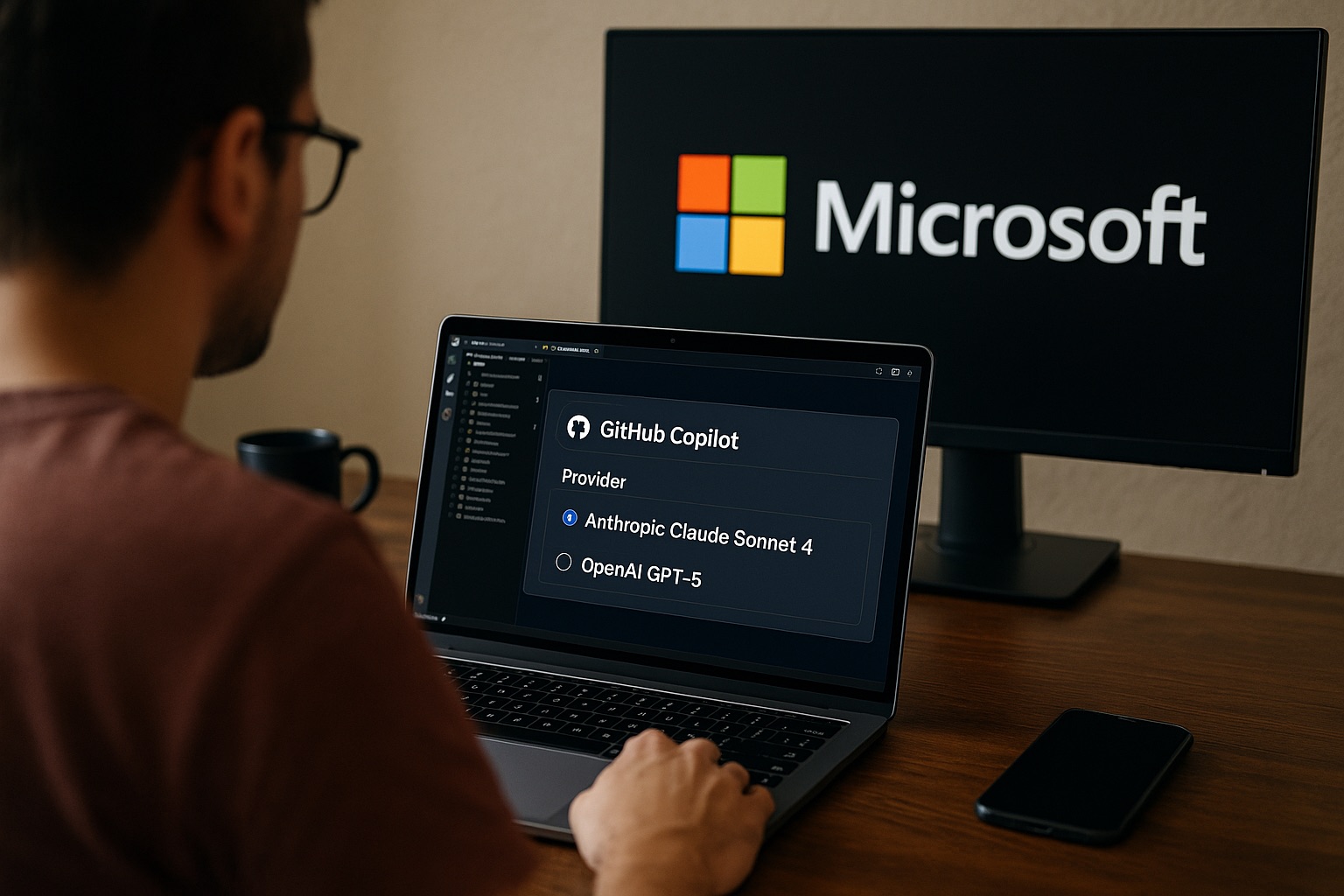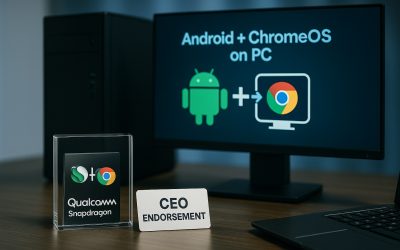Here’s something that might surprise you: Microsoft, after pouring over $13 billion into OpenAI, quietly decided that Anthropic’s Claude Sonnet 4 works better for coding tasks than OpenAI’s shiny new GPT-5. Their latest Visual Studio Code update includes automatic AI model selection that essentially admits Claude outperforms GPT-5 when it comes to helping developers write code.
This feels like a pretty big deal when you think about it. Microsoft has been OpenAI’s biggest supporter and investor, yet their own internal testing led them to choose a competitor’s AI for their most important developer tool. That’s like Apple recommending Android phones – it only happens when the evidence is overwhelming.
The shift tells us something important about how AI models actually perform in real-world scenarios versus how they’re marketed. Sometimes the newest isn’t necessarily the best for specific tasks.
How Microsoft’s Smart Model Selection Actually Works
Visual Studio Code’s new automatic feature operates like having a knowledgeable friend who knows exactly which tool works best for each job. Instead of forcing everyone to use the same AI model, it picks the optimal one based on what you’re trying to accomplish.
Free GitHub Copilot users get the variety pack:
- Automatic switching between Claude Sonnet 4, GPT-5, GPT-5 mini, and other models
- The system chooses based on task complexity and performance
- No manual configuration needed – it just works in the background
- Access to multiple AI personalities and strengths
Paid users get the premium experience:
- Primarily Claude Sonnet 4 for most coding tasks
- Consistent, high-quality responses from Microsoft’s preferred model
- Less model switching means more predictable coding assistance
- Think of it as having your favorite coding mentor available 24/7
This two-tier approach shows Microsoft views Claude as their premium offering while using model diversity to add value for free users. When a company reserves their “best” AI for paying customers, that’s a strong signal about performance differences.
What Microsoft’s Internal Testing Really Revealed
Julia Liuson, who heads Microsoft’s developer division, sent an internal email in June stating “Based on internal benchmarks, Claude Sonnet 4 is our recommended model for GitHub Copilot.” Even more telling – this guidance came before GPT-5 launched, and Microsoft hasn’t changed their recommendation despite having access to OpenAI’s latest technology.
What likely convinced Microsoft’s team:
- Claude understood code context better than competitors
- More accurate suggestions for complex programming problems
- Better performance when working with large codebases
- Fewer “almost right” suggestions that waste developer time
Sources familiar with Microsoft’s developer plans confirm the company has been telling its own engineers to use Claude Sonnet 4 for months. When Microsoft’s own developers choose Claude for their daily work, that’s about as strong an endorsement as you can get.
The timing matters: Microsoft stuck with their Claude preference even after testing GPT-5, suggesting the performance gap remains significant enough to matter for real coding work.
Beyond Coding: Claude Conquers Microsoft 365 Too
Microsoft’s Claude adoption isn’t stopping at developer tools. The Information reports that Microsoft 365 Copilot will soon be “partly powered by Anthropic models” after internal testing showed Claude outperformed OpenAI models in Excel and PowerPoint applications.
Office apps getting the Claude treatment:
- Excel: Better at understanding complex spreadsheet logic and relationships
- PowerPoint: More contextually appropriate presentation suggestions
- Additional Microsoft 365 features based on ongoing performance tests
- Integration timeline accelerated due to positive internal results
This expansion proves Microsoft’s confidence in Claude extends well beyond coding into mainstream business applications. When you’re putting AI into software used by millions of office workers daily, performance matters more than partnership politics.
Real-world advantages I’ve noticed:
- Claude seems to “get” what you’re trying to accomplish faster
- Less back-and-forth to clarify what you want
- More nuanced understanding of business contexts
- Better at maintaining consistency across longer documents
Microsoft’s Balancing Act: OpenAI Partnership vs Performance Reality
Here’s where things get interesting from a business perspective. Microsoft announced “significant investments” in training their own AI models, with AI chief Mustafa Suleyman revealing their MAI-1-preview model trained on only 15,000 H100 GPUs, calling it “a tiny cluster in the grand scheme of things.”
Microsoft’s multi-layered AI strategy:
- Massive internal AI development with expanded computing clusters
- Strategic partnerships with both OpenAI and Anthropic based on performance
- Model selection driven by benchmarks rather than business relationships
- Hedging bets across multiple providers for competitive advantage
The OpenAI relationship complexity: Despite favoring Claude for many tasks, Microsoft and OpenAI just announced a new deal potentially clearing the path for OpenAI’s IPO. Microsoft now allows OpenAI to use competing cloud providers, suggesting a more flexible, less exclusive partnership.
Think of it like a sports team that has a star player under contract but still drafts new talent and makes strategic trades. Business relationships matter, but winning matters more.
What This Means for Your AI Tool Choices
Microsoft’s model preferences provide valuable real-world guidance for anyone choosing AI tools for coding or productivity work. When a company with extensive internal testing resources consistently picks Claude for technical tasks, that signal cuts through a lot of marketing noise.
Practical takeaways for developers:
- Performance testing beats brand loyalty for AI tool selection
- Claude Sonnet 4 likely offers superior coding assistance compared to GPT-5
- Different AI models genuinely excel at different types of tasks
- Premium AI access increasingly means access to the best-performing models, not just the newest ones
For business users:
- AI model selection should be based on task-specific performance
- The “latest” model isn’t automatically the “best” model
- Enterprise AI adoption should prioritize measurable results over partnership relationships
- Multiple AI providers reduce dependency risks and improve outcomes
Microsoft’s transparent preference for Claude in technical applications offers rare insight into how major tech companies actually evaluate AI performance when significant business outcomes depend on the results. Their choice suggests Claude’s advantages for coding and productivity tasks are substantial enough to overcome partnership politics and financial investments.




Post a comment